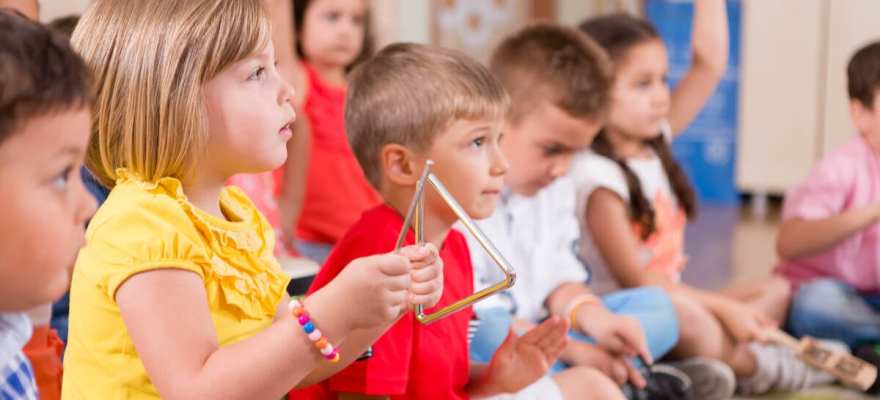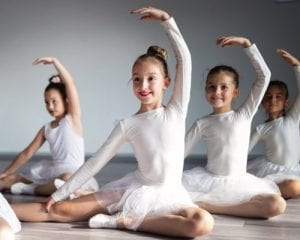
For the next thirteen years, your child will spend as much, if not more, time in school than at home. School will be the springboard to learning, friendships, and ultimately, a career. Help your child prepare for this journey; get him ready for success; encourage him to enjoy discovery, and assist him to meet the challenges which are ahead.
Each youngster arrives at the Kindergarten door with a different level of preparedness. You want your son or daughter to be ready to learn. Some of the basic “readiness” skills are: number concepts, naming colors, identifying shapes, comparing things that are the same and different, speaking and listening vocabulary, and general information about self and the world in which he or she lives.
Here are twelve quick and easy at-home activities you can do with your youngster to enhance these skills:
- Cut and paste pictures from magazines; name the items in each picture, make up a funny sentence about each. This will help develop find motor skills and build vocabulary.
- Trace around hands, feet, cookie cutters, jar covers, popsicle sticks and other objects. This is another fine motor activity and enhances creativity.
- Line up items such as blocks, spoons, cups, and clothespins to create left to right progression and visual patterns. This improves visual perception, sequencing, and organization. It helps children to find similarities and differences in objects. It also simulates the left to right eye movement used when actually reading books.
- Start with a one-step direction, then a two-part, to help children learn how to listen and follow directions. You can help your child follow directions and complete tasks by using auditory and visual clues. For example, use the words, first, next, and then when breaking jobs into various steps. You can also hold up a finger and as you state each step in the direction, stating #1 do …, #2 do …, and #3 do … Another helpful tip is to have the child repeat the task(s) back to you. You can ask, “What are you going to do first? And then?”
- Share your “junk” mail; open envelopes, sort by size, discuss the picture on the stamps, find letters or numbers and circle them. Children can sort envelopes by size, color, and those with and without windows. They can sort the actual mail by size. You can use a highlighter to find a certain letter, perhaps start with the first letter of your child’s first name. They can cut the stamp out and paste them on pretend mail they can give to family members. You can have your child sort the stamps by their design, for example, flags, animals, flowers, people, and so on. You can extend this by allowing your child to put stamps on your outgoing mail, and let them purchase stamps at the post office.
- After a trip to the store, post office, or church, have your child tell something about what he saw on the ride. To practice sequencing, ask: what happened first, next, etc.; write it down and let him draw a picture. This increases vocabulary and organization of time sequences. You can prompt your child by asking, which event happened first, for example, “Did we get dressed first or did we drive in the car first?” Also, ask about people you saw or buildings you passed along the way.
- Write or draw in sand, flour, sugar, etc.; Hint: keep it in a zip-lock bag for reuse. Shaving cream is also fun for art expression. This activity begins to stimulate an interest in both art and science. It develops recognition of tactile sensation and differences between solids and liquids. It encourages creativity and free expression. It can also be used to reinforce shapes, letters, and numbers. Additionally, this is another activity for fine motor control.
- Cut out pictures from magazines and classify them into groups of food, animals, clothing, toys, sports, and transportation. Using scissors is an important learning tool, and requires fine motor skills. This activity extends and enriches vocabulary. Organization, comparisons, and seeing similarities and differences are reinforced with this activity. You can also name colors and shapes and make up stories to go with the pictures. Two or three pictures can be placed next to each other to create the concept of sentence formation by putting words together.
- Find upper and lower case letters in magazines or newspapers match them with each other, spell out simple words, put them in alphabetical order, or cut and paste onto cards. Have your child group tall letters, such as b, d, l, and t and letters with hanging tails, such as g, j, p, q, and y.
- Draw a picture on a post card and mail it to a friend, relative, or neighbor. Drawing with pens, pencils, crayons and markers use slightly different motor skills. It develops appropriate grip technique, and steadies those small muscles in the hands and fingers. Cutting out a picture and using glue are two more skills for control of fine motor skills.
- Draw a line or design with a thick marker along the edge of a piece of paper and use a holepunch to go over the design. Use lightweight cardboard from file folders or packing materials. Use a dark marker to make a different shape line along the four sides and have your child punch holes along the line. You can also draw with a pencil and have your child trace over it with a brightly colored marker. This is a fine motor skill combined with eye-hand coordination. You can also discuss colors and ask where your child has seen this type of line. For example, a shoe string could be a straight line, a cookie is a circle, the kitten’s ears look like triangles, and so on.
- Encourage your child to speak in complete sentences, talk about the family pet, a television show, the clothes they have on, a visit to grandma’s, or plan an outing. Use three to five words to complete a sentence instead of a one-word response. Ask your child for more details to describe what he or she saw, or what something tasted like or felt like when it was touched.
What is most important? Visit the library every week and read to your child every day. Dedicate these weeks of summer to enjoy time with your child; make him your priority. Invest time in your child now and you will both reap rewards for a lifetime.
Dr. Valerie Allen is a child psychologist in private practice. She presents seminars for parents and professionals in the field of child development and has published two children’s books, “Summer School for Smarties” and “Bad Hair, Good Hat, New Friends.” Oh yes, she has also raised six children!

Read Next | Find Great After School Programs in Staten Island

